Seoul Urban Pinball Machine, by Studio Heech
Seoul Hall of Urbanism & Architecture, Jung-gu, South Korea – Seoul Urban Pinball Machine’ is a new public place and landscape experienced visually and physically through the city’s extensive materials and textures.
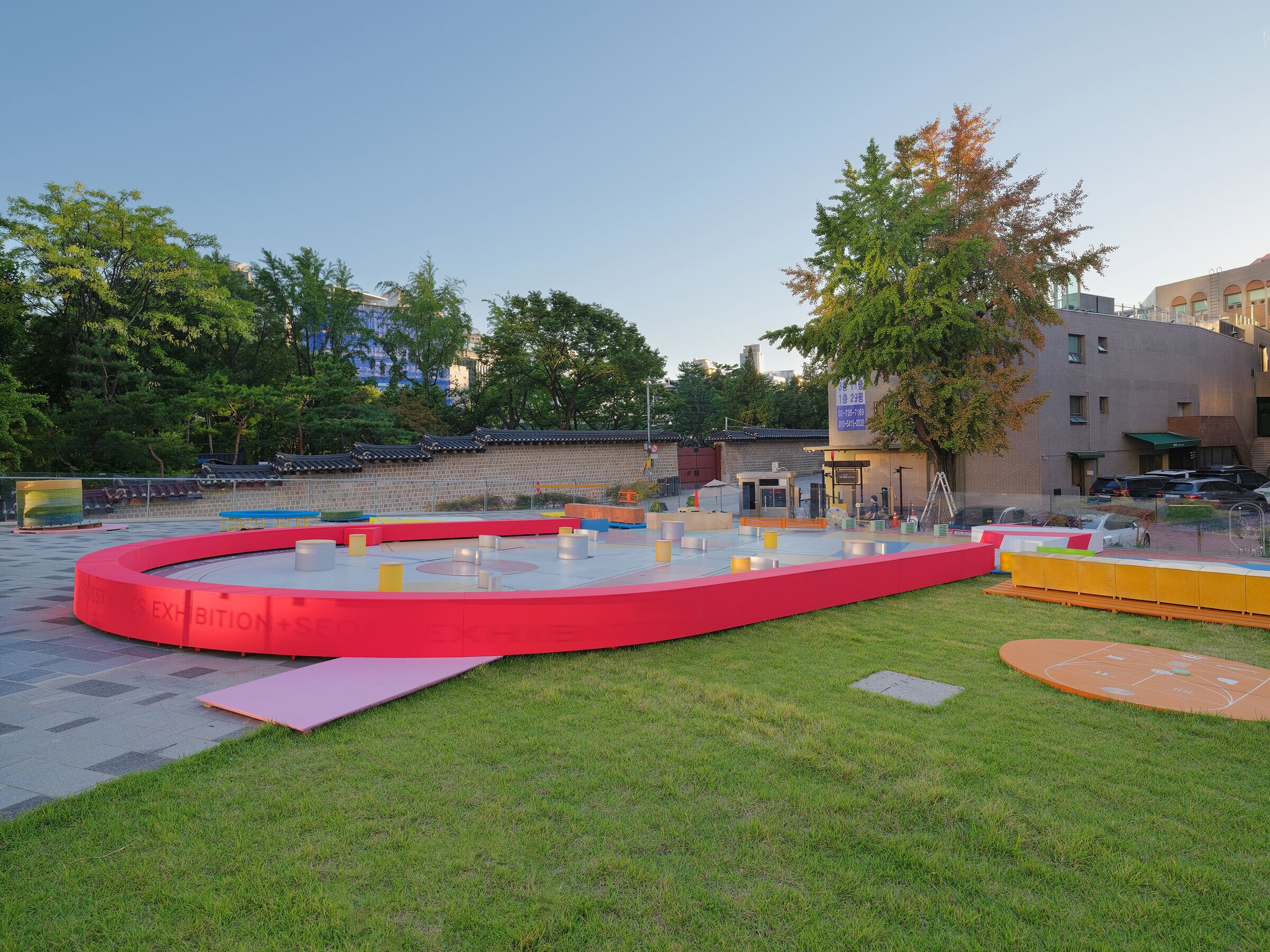
Studio Heech designed the project which is a three-month temporary installation at the Seoul Hall of Urbanism & Architecture. It was an invited competition hosted by Seoul government.
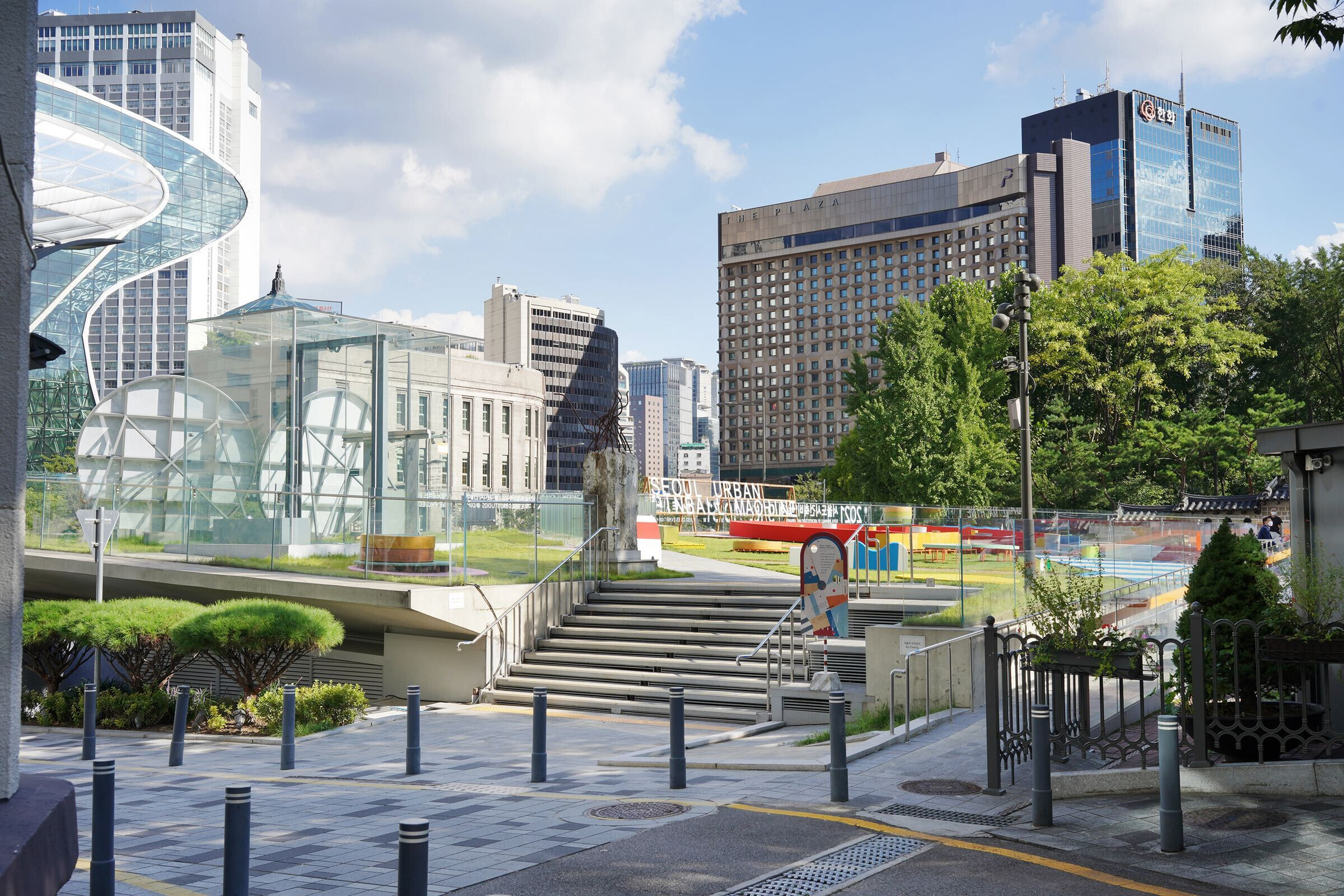
The outdoor pinball machine utilising the museum’s existing slope along with the objects made of eco-friendly materials provides a new excitement to the city. The proposed objects were made using recycled upcycled materials typically constituting the city. The materials we propose such as reused old wood, bioplastic, eco-friendly MDF resistant to decay etc. are tangible confrontations against the climate crisis our city is facing in the aftermath of the pandemic.
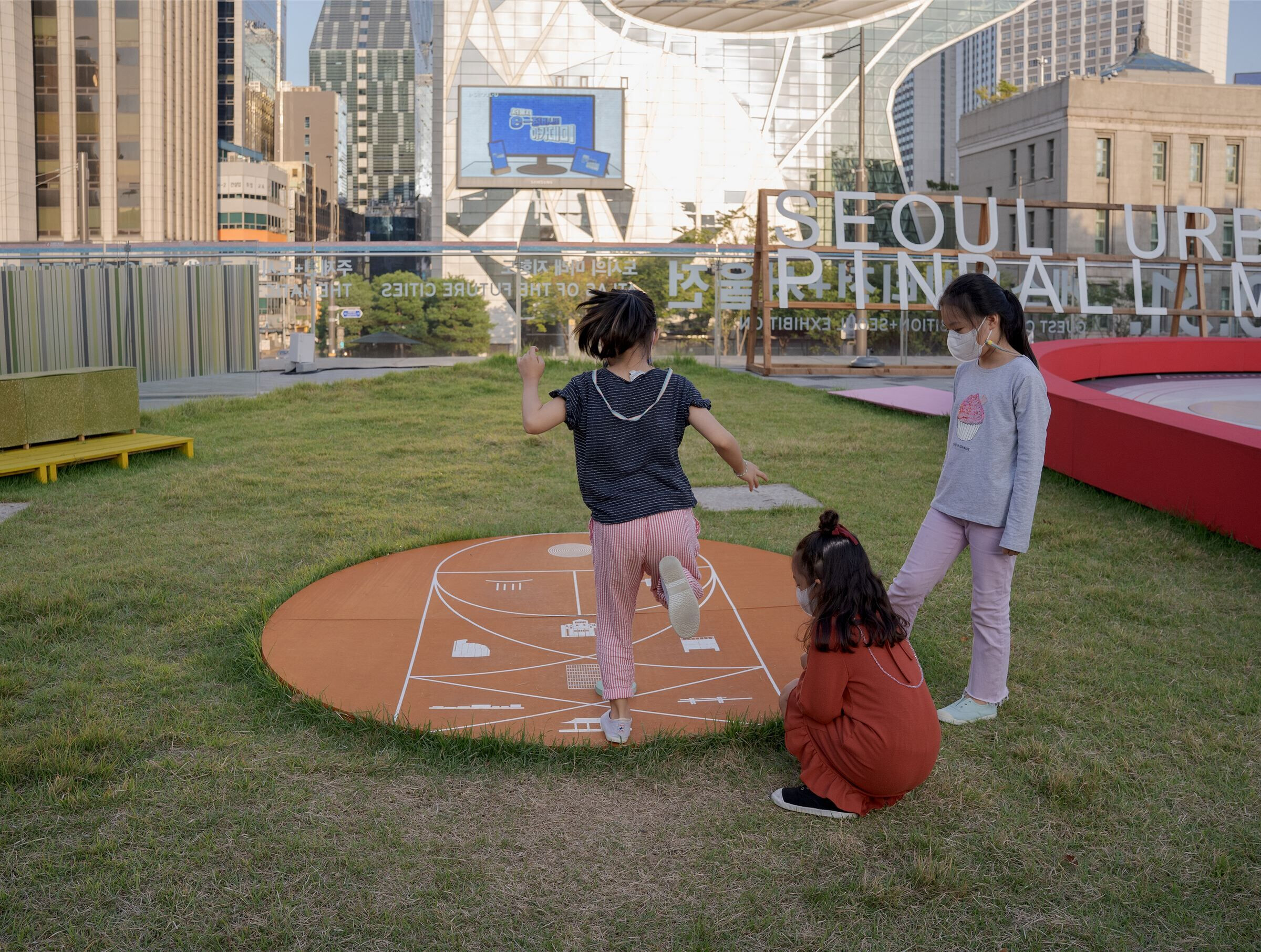
Urban play
The physical model 'Architectural Pinball Machine' produced during the competition stage was a means of experimentation for creating a new public space and urban playground at the slope. A launched ball travels up and down through the inclined game field with printed graphics and objects placed on it, expressing symbolic places and buildings of Seoul.
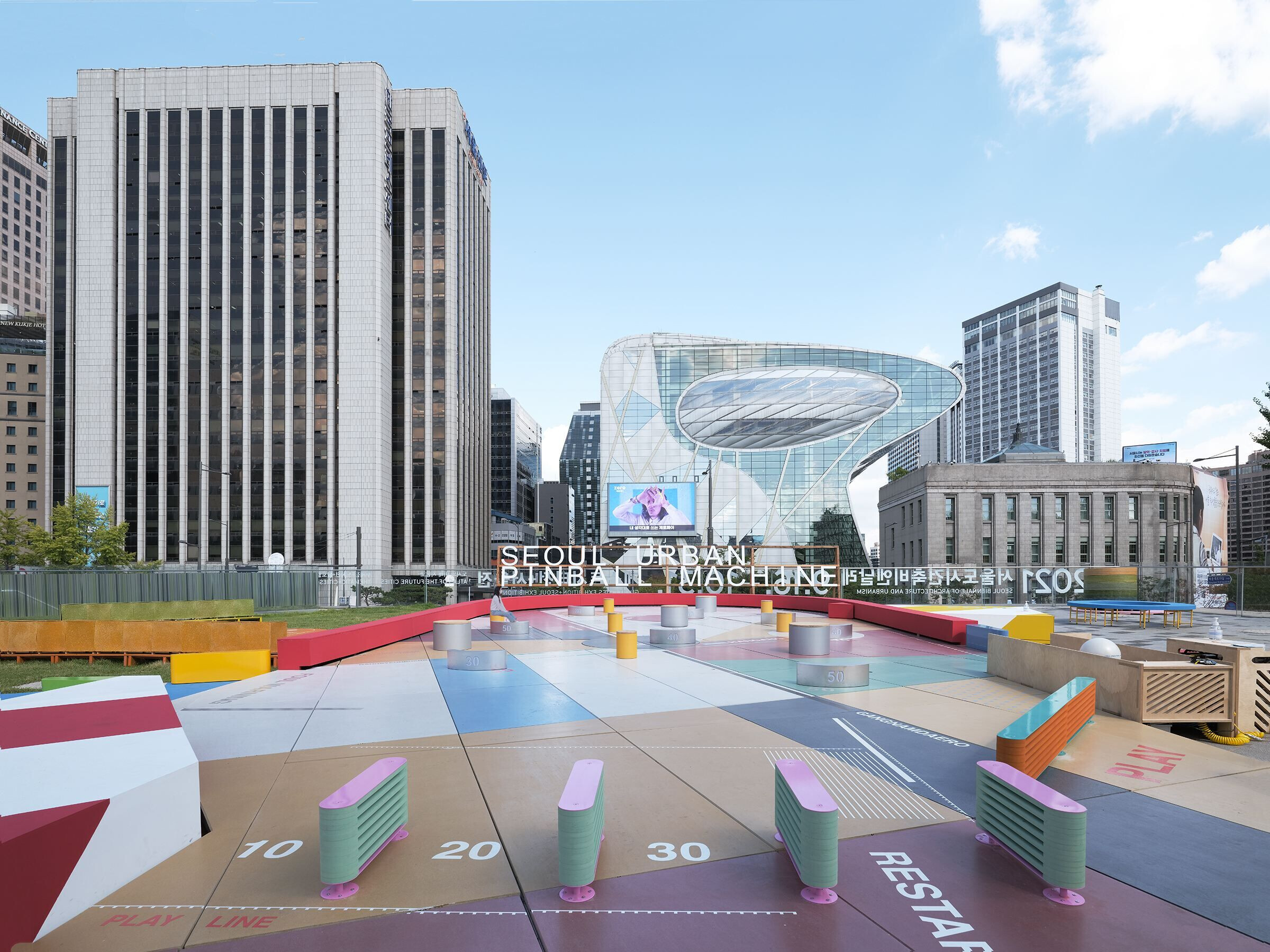
The player who launches a ball becomes the performer of the pinball’s traveling event, and the colleagues who watch it become the audience and participate in this performance. In addition, in the completed 9mx18m giant outdoor pinball machine, users directly come up on the game field, then play and interact with the objects that detect people’s motion. The game field becomes a stage for play, and visitors become participants in a new public performance called collective urban play through the acts of walking, running, dancing, sitting and resting in their own way.
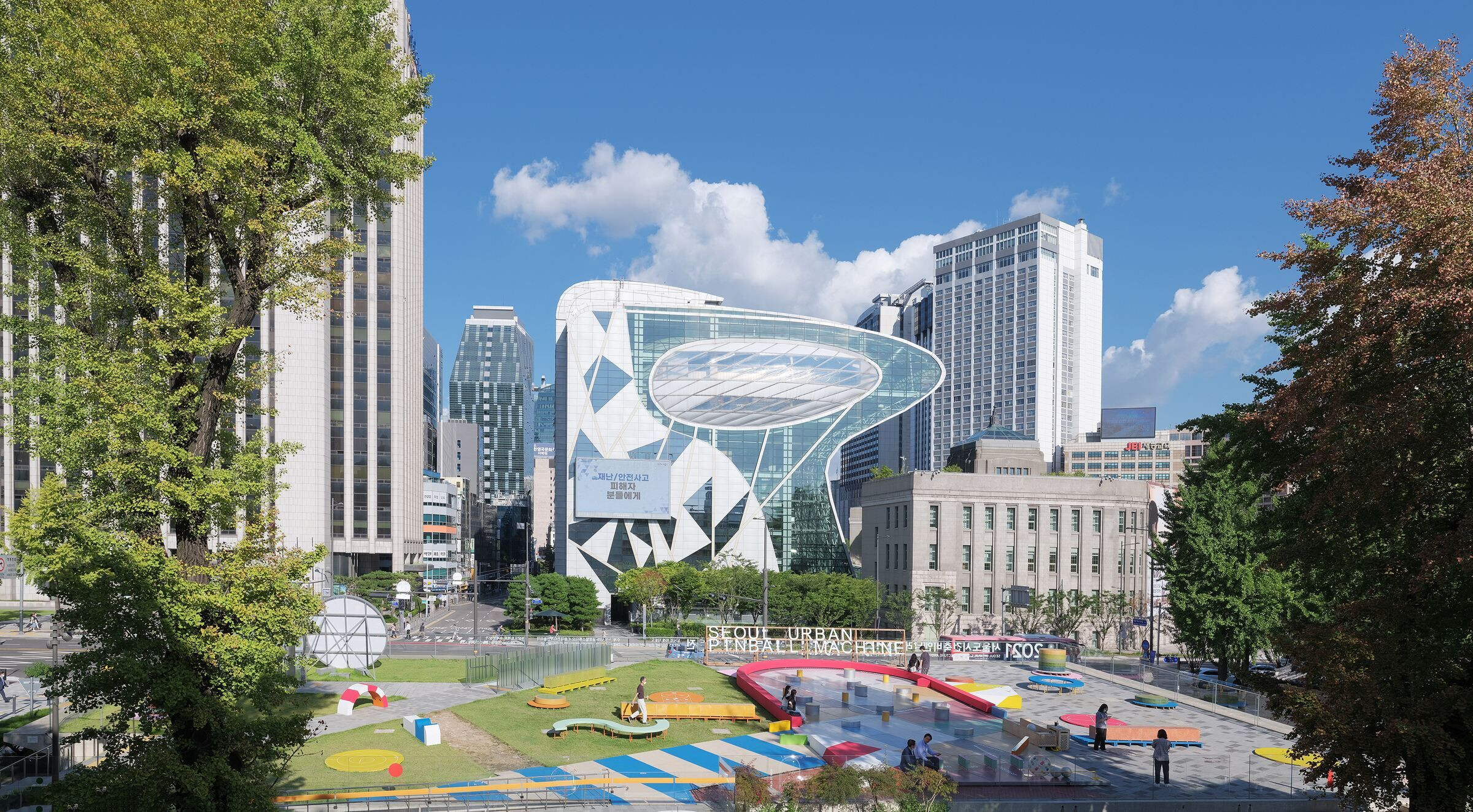
Material stores for the future:
The project was completed through collaboration with creative artisans, engineers, makers, material researchers, furniture makers. The design, production and installation took place in a short period of less than two months, and the Studio Heech’s makers participated in the entire fabrication process.
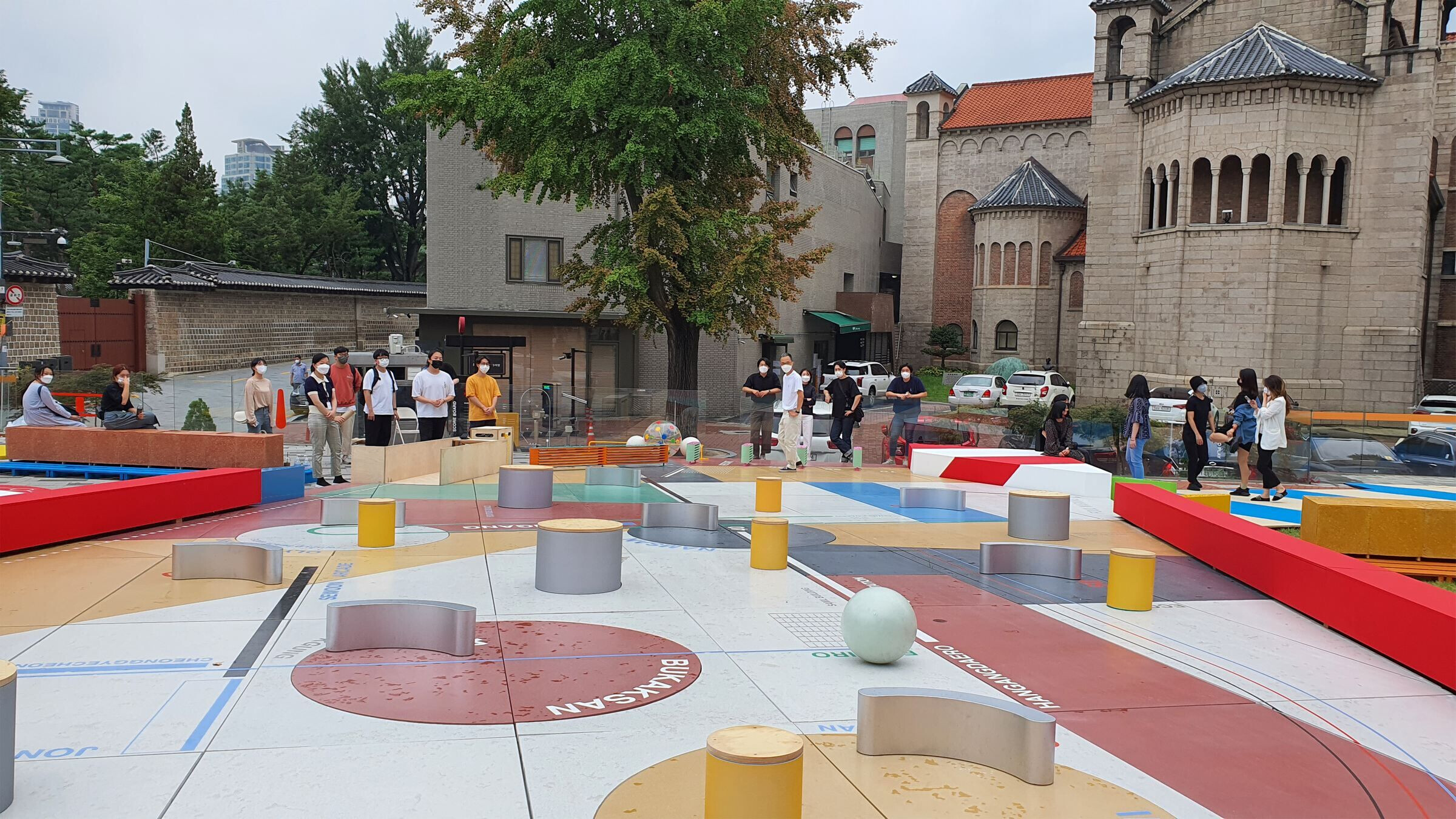
From the initial design stage, sustainability was regarded as a crucial issue. It was believed that sustainable vitality could be obtained when relocating to another place rather than being disposed of after three months installation in Seoul Maru. This meant that the final outcome of the project needs to be sustainable well-made products rather than being produced for the only temporary installation for three months. The components and joints were designed for ease of assembly and disassembly of this purpose. Almost all elements were prefabricated and installed on site in order to reduce the environmental impact and carbon footprint generated at the construction site. 2.5cm thick high-performance concrete (UHPC) panels, which has a low environmental impact due to its small weight and volume compared to its strength, were a choice for ease of assembly and disassembly. The 1m x 2m UHPC panel and the steel lower frame were manufactured at the factory in Jecheon and installed on site.
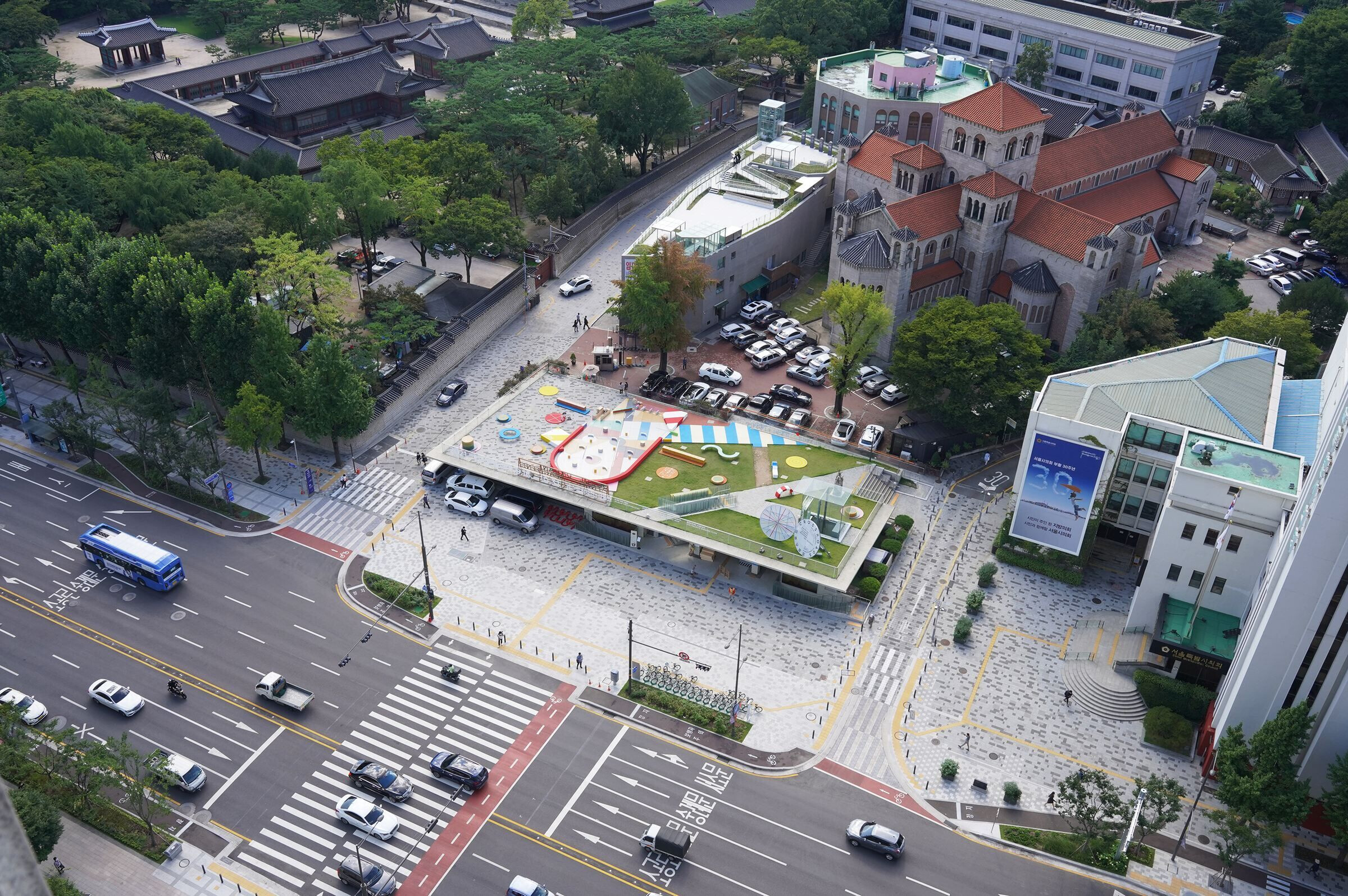
In addition, the proposed objects were made using various recycled/upcycled materials. The structural timber beams (old wood) that had been stored in the warehouse for many years were used as structural support for signage and furniture. Bio-plastic objects using duck egg yolk that is discarded by pharmaceutical companies, and eco friendly MDF boards that have no harmful emits but also have durable and stable enough quality for use outside have been used as a finishing material for various furniture and objects.
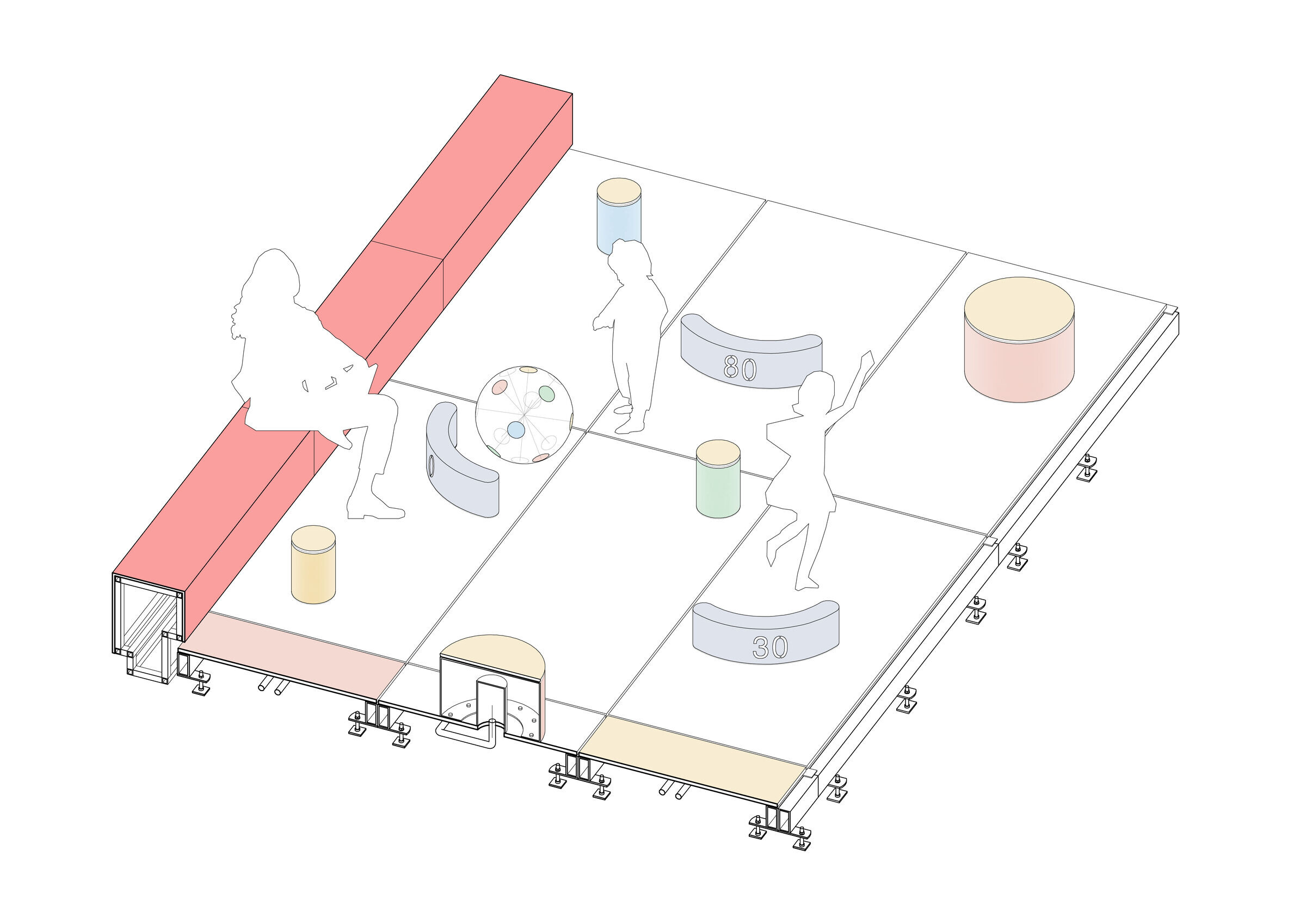
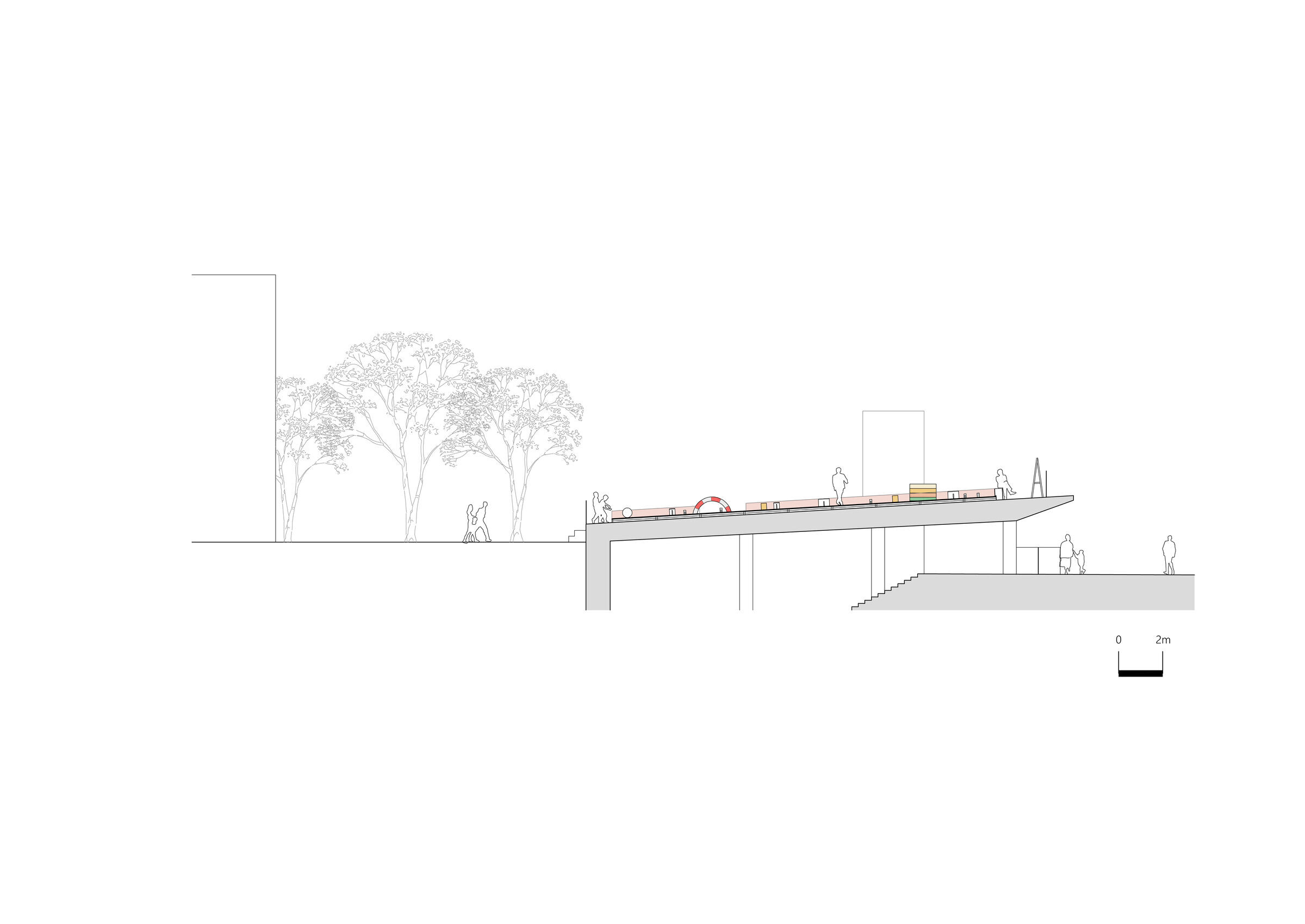

Material Used:
1. Game field floor panel: UHPC panels made by DZE
2. Game score bar: Hidden screen, metallic sheet, made by Hidden Tech
3. Tricoya: MDF panel, made by Accsys







































